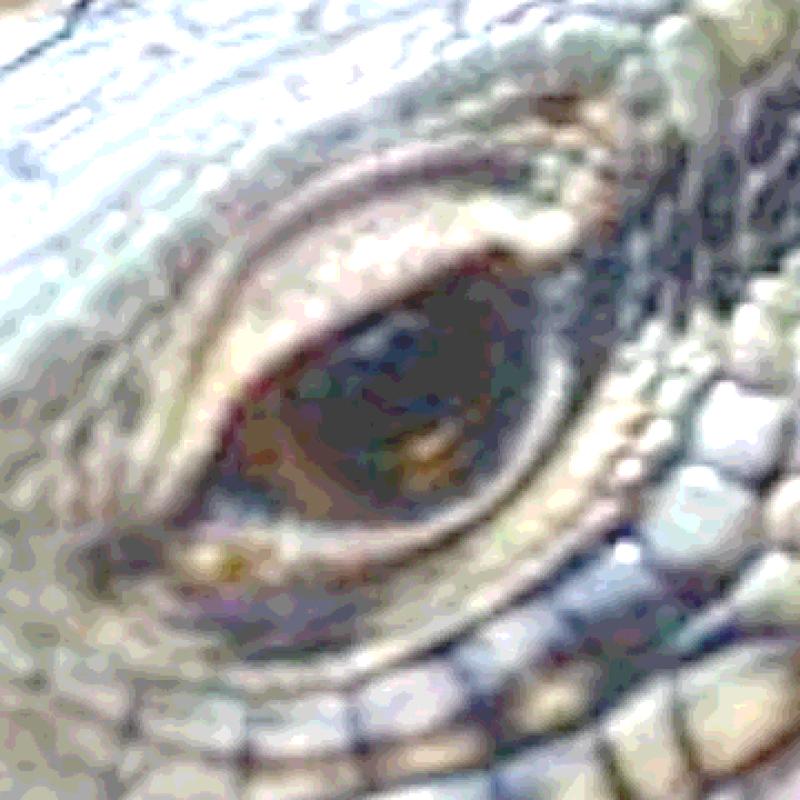This dog-size lizard is spreading through the southeastern U.S.
By: National Geographic


Argentine tegus are breeding in multiple states after escape or release from captivity;
biologists are concerned since they're voracious omnivores.

text
text


Deep in the Everglades, a voracious invader with attractive spotted scales is taking over. The Argentine black-and-white tegu, a large lizard that can grow up to four feet in length, has already proliferated widely throughout South Florida. But it's not stopping there. These invaders have started popping up throughout the southeastern United States, posing a potential threat to native species and farmers.
The creatures, native to South America, are omnivorous, eating just about anything with nutritional value they can fit in their mouth. They'll chomp on the eggs of ground-nesting animals such as birds and reptiles, including endangered sea turtles. They'll snack on doves and other small animals. They'll snag strawberries and other fruits and vegetables that grow low to the ground.
And they're extremely hardy, making their spread difficult to control or reduce once the species becomes established.
While tegus have been breeding in South Florida for more than a decade—after escaping captivity or being released by pet owners—they've only recently spread to at least two counties in Georgia. And during the past few months, the reptiles have been spotted in four counties in South Carolina, where biologists suspect they may be reproducing as well. There have also been isolated reports of their presence in Alabama, Louisiana, and Texas, as well as established populations in Central Florida.
For those who like to keep exotic animals, intelligent and docile tegus make for sought-after pets. Most in the U.S. are the product of American breeders, but between 2000 and 2010 alone, more than 79,000 live tegus were imported from South America, says Amy Yackel Adams, a biologist with the U.S. Geological Survey studying the animal. While only a tiny minority of the animals escape or are released, biologists believe the problem is worsening.
If many more animals are released, "there is the potential for a very large population in the wild," Adams says.

Tegus do best in upland forests and grasslands, especially in areas that receive substantial seasonal rain, such as Florida's hardwood and subtropical pine forests. As climate change causes tropical and subtropical climatological zones to shift north, the range suitable for tegus in North America may also widen, Adams says.
Researchers are most concerned about tegus' predatory, egg-eating habits. In Venezuela, they're known for sneaking into chicken coops to steal eggs, earning them the name el lobo pollero, "the chicken wolf." U.S. poultry farmers should be on guard.
If tegus continue to disperse across the Southeast, Adams says, they could threaten many animals that nest or live on the ground, including the Eastern indigo snake, which is listed as threatened under the Endangered Species Act. Adams also worries that they might eat the eggs of gopher turtles—another threatened species—American alligators, American crocodiles, and more.
Can they be stopped?
Tegus are hardy, able to withstand colder temperatures than some other reptiles because they can elevate their body temperature as much as 18 degrees Fahrenheit above the ambient temperature. If it gets too frigid in winter, they can brumate, the reptile version of hibernation, becoming sluggish and hiding out in burrows they've stolen from gopher tortoises or other burrowing animals.
They can recover quickly from threats, such as hunting. "In the 1980s, the tegu was the most exploited reptile in the world," says Lee Fitzgerald, a professor of zoology at Texas A&M University. During that time, some two million tegu skins were exported from Argentina each year for the leather trade. "Yet nowhere were they hunted to local extirpation," Fitzgerald says.
To curb tegus' entrenchments and further spread in the U.S., wildlife officials and others in states where tegus have taken hold are searching for solutions.
This year alone in South Florida, traps set by the USGS captured more than 900 tegus near Everglades National Park. But according to Adams, there's no sign of a decline in tegu numbers in the area. Before they can revise their plans for tegu removal, the USGS needs to understand the group living down in the glades. To do this, they have radio-tagged the lizards and are tracking their habits.
In Georgia, state biologists have been working to trap tegus in Toombs and Tattnall Counties, west of Savannah, and report that they're finding fewer of the animals. Daniel Sollenberger, a herpetologist with the Georgia Department of Natural Resources, says the state may have caught the tegu problem in time.
"We've been trapping them for a couple of years now," Sollenberger says. "We brought in around a dozen last year and about a half a dozen this year. It could be that there are fewer of them now, at least in that location."
Part of the solution in Georgia has been to engage state residents in awareness campaigns, encouraging them to report tegu sightings. The Georgia Reptile Society has a Tegu Task Force, to which residents can submit photos of suspected tegus for identification. Once they identify a tegu, the society's volunteers trap the animal and bring it to a rescue facility. They are then given to people who want them as pets.
"We do everything we can to get the animal, capture it, and try to rehome it," says Justyne Lobello, president of the Georgia Reptile Society.
"We want to help take them out of the habitat as humanely as possible. It helps that we have a long waiting list of people who want one as a pet."
Nonetheless, the best way to fix the problem is by preventing their spread to the wild in the first place, experts say. Some states such as Alabama have enacted laws barring the animal's import, and others may follow suit. Meanwhile, a few biologists have cautioned against owning these animals at all.




This is the first time I've ever heard of a "tegus". But the article says people keep them as pets. I got curious. This is from a pet store:
--------------------------------------
Gentle Giants: Basic Tegu Care
Have you ever looked at your blue tongue skink and
wished it was 10x the size so you could hang out on the couch together?
Then boy do we have the pet for you, the tegu!
Large lizards can be very intimidating to most, even those in the reptile hobby.
Don't worry, these guys are basically the puppy dogs of the reptile kingdom.
Let's take a closer look at the tegu.
Maybe this has been the dream pet you have been waiting for!
About the Tegu
Native to Central and South America, the tegu is a member of lizard species belonging to the family Teiidae . There are many types of tegu lizards however the most common species you will find available as pets are the gold (common) tegu, red tegu and Argentine black & white tegu. Tegus may resemble some monitor species but are only distantly related. Male tegus can be easily identified by the large jowls the develop as adults (with the exception of the gold tegu). On average, tegus will live up to 12 years and grow an astounding 3-5 feet in length! The tegu has become a household favorite in reptile community for their docile and gentle nature, and for their strong connection to their owners. So what does it take to keep a happy, healthy tegu in your home?
Enclosure
Tegus do best in a longer tank that provides them with room to roam around and exercise. At the least, the tank should measure 6’ by 3’ by 2.5’ with a tightly fit screen top. For a baby or hatchling, a standard 20-gallon tank with screen top is good. Since tegus like to burrow, we recommend you have at least 8" of substrate in your enclosure. Cyprus much makes an excellent substrate as it holds humidity well and cannot be easily ingested. Adding moss will also help hold a high humidity level, Pisces recommends: Zoo-Med Sphagnum Moss . DO NOT USE SAND! Sand can be easily ingested and can leas to intestinal blockages. Provide plenty of plants, branches and hides for your tegu to climb. Make sure your enclosure allows for adequate ventilation, high moisture levels with little to no exchange of air will lead to mold and fungus growth. A large weight on the top or a lock is required to prevent your Tegu from escaping.
Climate Control
Feeding & Supplements
Tegus are omnivorous in the wild. As juveniles, you want to be feeding a high percent of calcium dusted proteins (crickets, worms, etc.) to help them grow. They will need to be fed multiple times per day until they are about 6 inches long without the tail. As they get older, you want to transition their diet to include fruits and vegetables (kale, romaine lettuce, dandelion leaves, strawberries, grapes, blueberries, mango). Variety is the spice of life, so try to cycle their foods to keep them interested. Avoid feeding iceberg lettuce, spinach, lettuce, broccoli, cauliflower, or other bitter veggies as they impede the ability to take in vitamins. Once fully grown, tegus can have an appropriately sized mouse as a treat up to twice a month. Protiens should be dusted with a quality calcium/supplement powder every other feeding. Pisces recommends: Repashy Calcium Plus Supplement .
Handling & Behaviour
Between the Burmese python and the lizard, the Everglades native species are being destroyed.
No non-indigenous species should be allowed in the US.
Who in the hell would want one of these things as a pet.
Given a choice I would rather have a pot bellied pig.
It kinda looks like Charlie, my son's leopard gecko he had as a kid. However Charlie never got larger than about a 9 inches long.
Imagine Charlie the size of a big dog...
Then it never would have been a member of the family.
You don't like dogs?
I love dogs! Just not 4 foot dogs that come with scales
Aw, c'mon... You might get the chance of watching your next puppy... hatch...